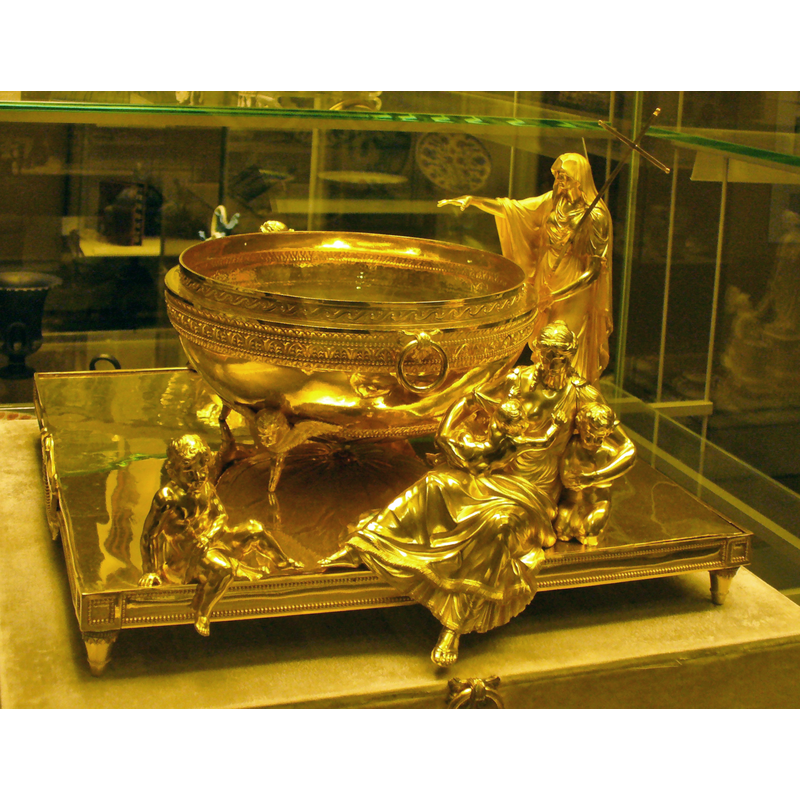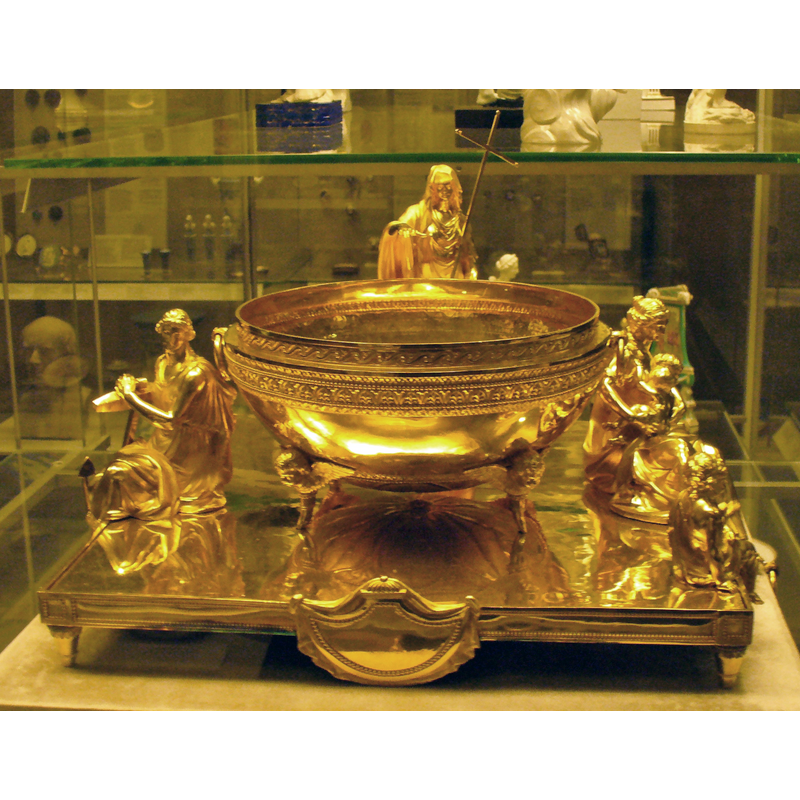London No. 98

Image copyright © Colin Smith, 2015
Image and permission received (e-mail of 23 March 2015)
Results: 2 records
view of font
INFORMATION
FontID: 19783LON
Object Type: Baptismal Font1
Museum and Inventory Number: British Museum
Church/Chapel: [not in a church]
Country Name: England
Location: Greater London, South East
Font Location in Church: [in a museum]
Date: 1797-1798
Century and Period: 18th century (late)
Workshop/Group/Artisan: designed by Humphrey Repto; made by the workshop of Paul Storr
Font Notes:
Click to view
The British Museum [www.britishmuseum.org/explore/highlights/highlight_objects/pe_mla/t/the_portland_font.aspx] [accessed 23 March 2015] informs: "The Portland Font. London, England, AD 1797-98. Made for the baptism of the Duke of Portland's grandson. This superb gold font was designed by Humphrey Repton (1752-1818) and made by the workshop of Paul Storr (1771-1844). It is the only known example in England of a gold font made for private use. It was commissioned by William Bentinck, third duke of Portland (1738-1809) on the occasion of the birth of his first grandson in 1796. It has remained in the family until its acquisition by the British Museum in 1986. The detachable bowl, with its bold neo-classical decoration, rests on four winged cherub feet, surrounded by three free-standing sculptural figures representing the Cardinal Virtues. These are: Faith (standing with a cross and her hand held over the bowl in the act of benediction), Hope (seated, holding a symbolic anchor) and Charity (seated and shown comforting children). This is the first use in English goldsmith's work of free-standing figural sculpture, and heralds the nineteenth-century tradition of magnificent sculptural presentation plate. The contrast between chased and burnished surfaces of gold can be noted in the textured draperies of the figures, while the lilies decorating the underside of the bowl are reflected in the plinth below, as if on water. Paul Storr was one of the most outstanding and well known of London goldsmiths. He operated an independent firm before joining the Royal Goldsmiths, Rundell, Bridge and Rundell in 1811. S. Gough (ed.), Treasures for the Nation, exh. cat. (London, Published by The British Museum Press for the National Heritage Memorial Fund, 1988)"
MEDIUM AND MEASUREMENTS
Material: metal, gold
